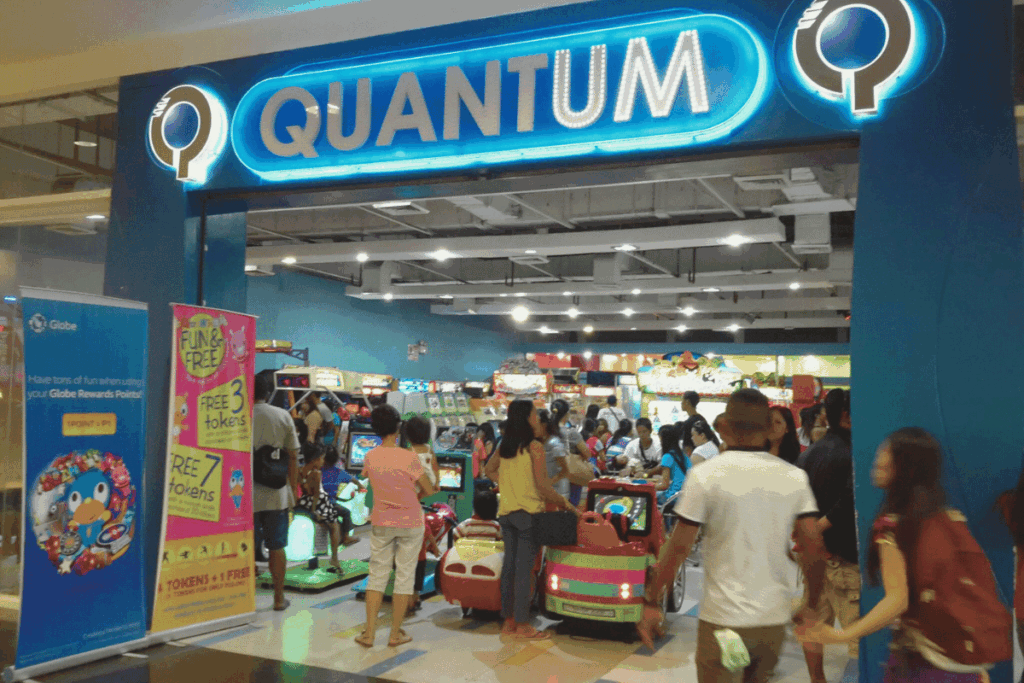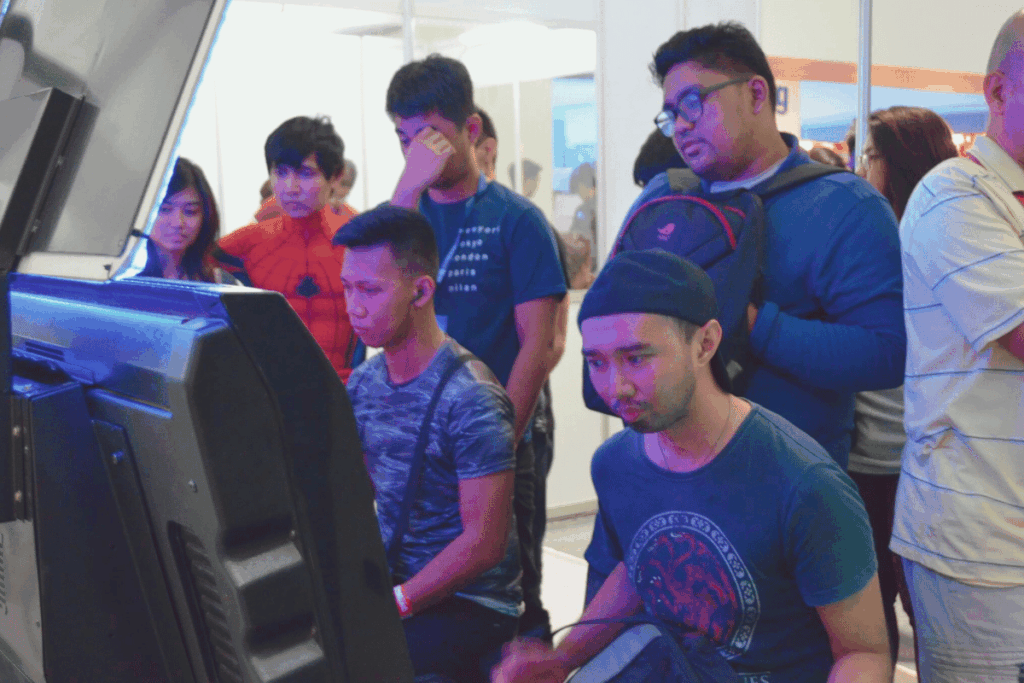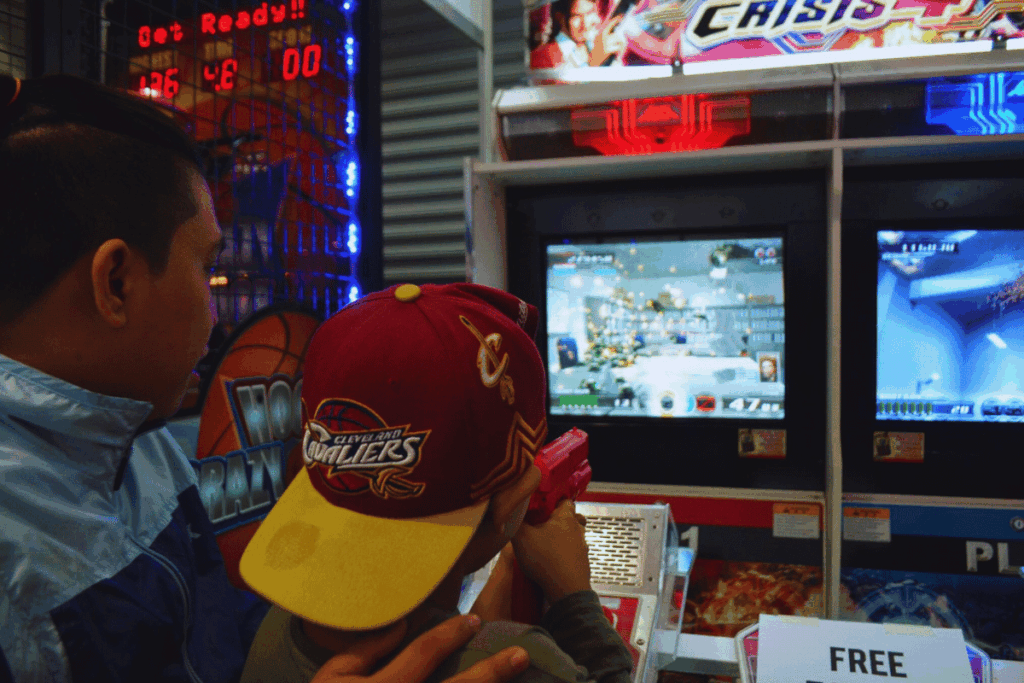Remember when gaming meant leaving your house? When you had to physically go somewhere, pocket full of coins, to play the games you loved? The arcade era wasn’t just about the games—it was about the whole experience. And if you’re old enough to remember it, you know exactly what we’re talking about.
The Sound of Home
You could hear an arcade from a block away. That unmistakable symphony of button mashing, joystick clicks, and overlapping game soundtracks created an atmosphere you can’t replicate at home. The moment you walked through those doors, you were transported. The smell of popcorn mixed with the slight metallic scent of coins, the cool air conditioning providing relief from Manila’s heat—it was its own world.

Every mall had one. Every kid knew which arcade had the best fighting game setups, which one had the newest racing games, and which one was most likely to let you keep playing if your time ran out while you were in the middle of an epic run.
When Gaming Was a Spectator Sport
Here’s something younger gamers might not fully understand: we used to gather in crowds to watch people play. No streaming, no YouTube, no Twitch. Just a group of players huddled around a cabinet, watching someone pull off combos in Tekken or Street Fighter.

You’d line up quarters on the cabinet to claim “next game.” That row of coins was sacred—a queue system built on trust and respect. And if someone was really good? Their queue would stretch across the entire machine. We’d wait 30 minutes just for our turn to get demolished by the local champion.
The best players earned reputations. Every arcade had its legends—that one guy who could beat Metal Slug on a single coin, or the KOF player nobody could touch. No leaderboards needed their gamertags; everyone knew them by face.
The Social Hub We Didn’t Know We Had
Arcades were where friendships formed. You’d show up solo and leave with a new gaming buddy’s number. You’d teach younger kids how to do special moves. You’d get tips from older players on how to beat that impossible level or that one matchup you’re having a hard time with.
It was gaming’s original social network, and it was beautiful in its simplicity. No friend requests, no online toxicity—just people who loved games sharing physical space and experiences.
Some of us met our closest friends in arcades. Others found their first gaming rivals-turned-friends. The arcade was the great equalizer—it didn’t matter if you were rich or poor, from the north or south of Metro Manila. If you could play, you belonged.
When Every Coin Counted
Gaming used to hurt your wallet directly. Five pesos per game. Ten pesos for the premium cabinets. Fifteen pesos per swipe. You budgeted your weekly allowance around arcade trips. You made every continue count because you literally paid for your mistakes.

This made us better players. You couldn’t just brute force your way through with unlimited continues. You learned patterns, memorized enemy placements, and developed actual skill because your limited coins demanded it.
Getting far into a game on a single coin? That was a badge of honor. Beating Metal Slug or House of the Dead or Strikers 1945 without continuing was legendary status. High scores meant something because they represented real investment—time, money, and pure dedication.
The Games We Remember
Time Crisis with those foot pedals for cover. Dance Dance Revolution turning rhythm games into a cardio workout (and public performance). Initial D where you learned to drift before you could even drive. Daytona USA with linked cabinets where you’d race against the person next to you and slam them at the corners.
Fighting games ruled the Philippine arcade scene. Tekken 3, Street Fighter Alpha, King of Fighters. Every player had their main, their secret techniques, their money match stories.
And light gun games! House of the Dead, the entire Time Crisis series, that one sniper game with an actual scope. There was something visceral about physically aiming and pulling that trigger. Modern controllers just don’t capture that same feeling.
What We Lost (And What We Gained)
Modern gaming is incredible. We have better graphics, deeper stories, online multiplayer connecting players worldwide. We can play thousands of games from our homes. This is objectively the best time to be a gamer.
But we lost something too. We lost the ritual of going somewhere special to play. We lost the immediate community of strangers becoming friends over a shared cabinet. We lost the physical skill of arcade controls, the specific weight and resistance of those Japanese joysticks and convex buttons.
We lost arcades as third spaces—places that weren’t home or school/work where young people could just exist and connect through shared interests.
The Nostalgia Hits Different
If you grew up in the arcade era, you know this feeling. You see an old cabinet at a retro gaming store or convention, and suddenly you’re 12 years old again, clutching your remaining coins, debating whether to spend them now or save them for next weekend.

You remember specific arcades. Timezone at your local mall. That sketchy but beloved spot near your school. The premium arcade where the cabinets were always in perfect condition, but everything cost more.
You remember the sounds, the crowds, the rivalries, the friendships. You remember when gaming was a social activity by default, not by online connection but by physical presence.
It’s Not Completely Gone
The arcade scene isn’t dead—it’s evolved. Places like Quantum, Timezone, and various gaming bars around Metro Manila keep the spirit alive. Virtual reality arcades offer new experiences you can’t get at home. Some classic arcades still operate, maintained by people who remember and preserve that culture.
Competitive fighting game scenes still gather at arcade-style setups. Some barcades combine nostalgia with adult socializing. The community spirit survives in different forms.
But it’s not the same, and that’s okay. Nothing gold can stay, as they say. What we have now are the memories and the appreciation for what that era meant to us.
Why We’re Better For It
The arcade era taught us things modern gaming can’t quite replicate. It taught us patience (waiting for our turn). It taught us grace in defeat (you can’t rage quit when people are watching… well, you can, but be prepared for the backlash). It taught us community (helping the stranger next to you learn). It taught us the value of skill development (because continues cost money).
We learned to play under pressure, with crowds watching. We learned to respect equipment that everyone shared. We learned that gaming could be both competitive and communal.
These lessons shaped how many of us approach gaming today. The arcade era made us who we are as gamers.
The Era We’ll Always Remember
You can play arcade classics on modern consoles now. Some cabinets are available as home versions. But you can’t bottle the experience. You can’t download the feeling of that era.
The arcade days are gone, but they live on in those of us who experienced them. Every time we talk about “the good old days” of gaming, this is what we mean. Not that the games were better (though some were incredible), but that the experience was something special.
We’re lucky we got to live through it. We’re lucky we have these memories. And maybe, just maybe, some of that magic will find its way back in new forms we haven’t imagined yet.
But for now, we remember. We remember the arcade era we all miss, and we smile knowing we were there when gaming meant something different—when it meant leaving home, meeting friends, and feeding coins into machines that gave us memories worth more than the quarters we spent.
VRSUS is your source for gaming, pop culture, and the stories that connect us. Follow us for more content celebrating Filipino gaming culture.
Read More:
Why ’90s Anime Is The Gold Standard – VRSUS
It’s Time We Talk About The Laziest Anime Tropes And Why You Deserve Better – VRSUS
Why You Deserve Better Stories (And How to Find Them) – VRSUS





